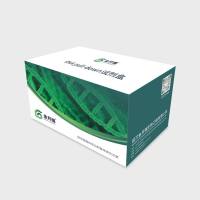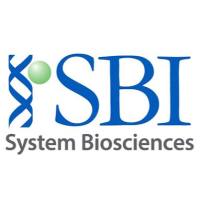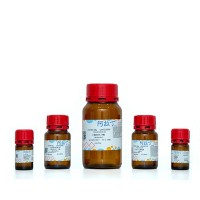Use of Microsphere‐Supported Phospholipid Membranes for Analysis of Protein‐Lipid Interactions
互联网
- Abstract
- Table of Contents
- Materials
- Literature Cited
Abstract
Many proteins bind to phospholipid membranes in order to gain or modify function. As an example, blood coagulation proteins must bind to phosphatidylserine?containing membranes in order to gain procoagulant activity. The flow cytometry approaches described in this unit provide versatile assays for equilibrium and kinetic binding studies to measure essential membrane?binding properties. These assays are rapid, require only small quantities of the protein of interest, and can evaluate binding interactions in complex, physiological mixtures, including blood plasma and tissue culture media.
Keywords: lipospheres; phosphatidylserine; phosphatidylcholine; factor VIII; factor V; factor IX; factor X; prothrombin; lactadherin; annexin V
Table of Contents
- Basic Protocol 1: Preparation of Lipospheres
- Basic Protocol 2: Equilibrium Binding Studies
- Basic Protocol 3: Competition Binding Studies with Phospholipid Vesicles
- Support Protocol 1: Cleaning and Size‐Sorting of Glass Microspheres
- Support Protocol 2: Preparation of Phospholipid Vesicles
- Support Protocol 3: Analysis of Data: Quadratic Versus Approximate Solution
- Reagents and Solutions
- Commentary
- Literature Cited
Materials
Basic Protocol 1: Preparation of Lipospheres
Materials
Basic Protocol 2: Equilibrium Binding Studies
Materials
Basic Protocol 3: Competition Binding Studies with Phospholipid Vesicles
Materials
Support Protocol 1: Cleaning and Size‐Sorting of Glass Microspheres
Materials
|
Figures
Videos
Literature Cited
| Literature Cited | |
| Bangham, A.D., Standish, M.M., and Watkins, J.C. 1965. Diffusion of univalent ions across the lamellae of swollen phospholipids. J. Mol. Biol. 13:238‐252. | |
| Bardelle, C., Furie, B., Furie, B.C., and Gilbert, G.E. 1993. Kinetic studies of factor VIII binding to phospholipid membranes indicate a complex binding process. J. Biol. Chem. 268:8815‐8824. | |
| Brian, A. and McConnell. H. 1984. Allogeneic stimulation of cytotoxic T cells by supported planar membranes. Proc. Nat. Acad. Sci. U.S.A. 81:6159‐6163. | |
| Chen, P.S., Jr., Toribara, T.Y., and Warner, H. 1956. Microdetermination of phosphorus. Anal. Chem. 28:1756‐1758. | |
| Gilbert, G.E. and Arena, A.A. 1995. Phosphatidylethanolamine induces high‐affinity binding sites for factor VIII on membranes containing phosphatidyl‐L‐serine. J. Biol. Chem. 270:18500‐18505. | |
| Gilbert, G.E. and Arena, A.A. 1998. Unsaturated phospholipid acyl chains are required to constitute membrane binding sites for factor VIII. Biochemistry 37:13526‐13535. | |
| Gilbert, G.E. and Drinkwater, D. 1993. Specific membrane binding of factor VIII is mediated by O‐phospho‐L‐serine, a moiety of phosphatidylserine. Biochemistry 32:9577‐9585. | |
| Gilbert, G.E., Furie, B.C., and Furie, B. 1990. Binding of human factor VIII to phospholipid vesicles. J. Biol. Chem. 265:815‐822. | |
| Gilbert, G.E., Drinkwater, D., Barter, S., and Clouse, S.B. 1992. Specificity of phosphatidylserine‐containing membrane binding sites for factor VIII: Studies with model membranes supported by glass microspheres (lipospheres). J. Biol. Chem. 267:15861‐15868. | |
| Hauser, H., Pascher, I., Pearson, R.H., and Sundell, S. 1981. Preferred conformation and molecular packing of phosphatidylethanolamine and phosphatidylcholine. Biochim. Biophys. Acta 650:21‐51. | |
| Hope, M.J., Bally, M.B., Webb, G., and Cullis, P.R. 1985. Production of large unilamellar vesicles by a rapid extrusion procedure. Characterization of size distribution, trapped volume and ability to maintain a membrane potential. Biochim. Biophys. Acta 812:55‐65. | |
| Lasic, D.D. 1997. Colloid chemistry. Liposomes within liposomes. Nature 387:26‐27. | |
| Lauer, S., Goldstein, B., Nolan, R.L., and Nolan, J.P. 2002. Analysis of cholera toxin‐ganglioside interactions by flow cytometry. Biochemistry 41:1742‐1751. | |
| Shi, J. and Gilbert, G.E. 2003. Lactadherin inhibits enzyme complexes of blood coagulation by competing for phospholipid binding sites. Blood 101:2628‐2636. | |
| Shi, J., Heegaard, C.W., Rasmussen, J.T., and Gilbert, G.E. 2004. Lactadherin binds selectively to membranes containing phosphatidyl‐L‐serine and increased curvature. Biochim. Biophys. Acta 1667:82‐90. | |
| Stuart, M.C., Reutelingsperger, C.P., and Frederik, P.M. 1998. Binding of annexin V to bilayers with various phospholipid compositions using glass beads in a flow cytometer. Cytometry 33:414‐419. | |
| Tamm, L. and McConnell, H. 1985. Supported phospholipid bilayers. Biophys. J. 47:105‐113. |







